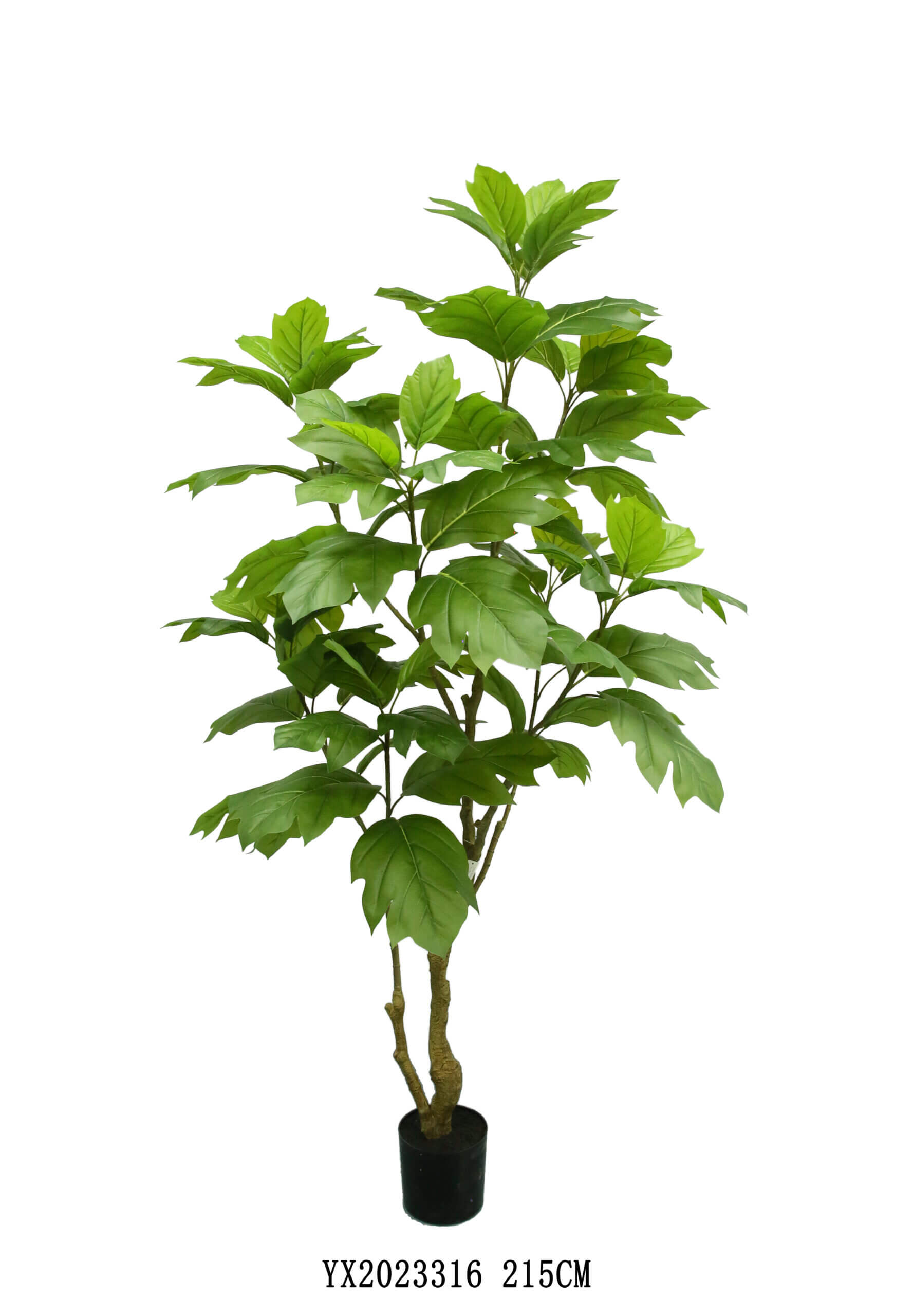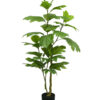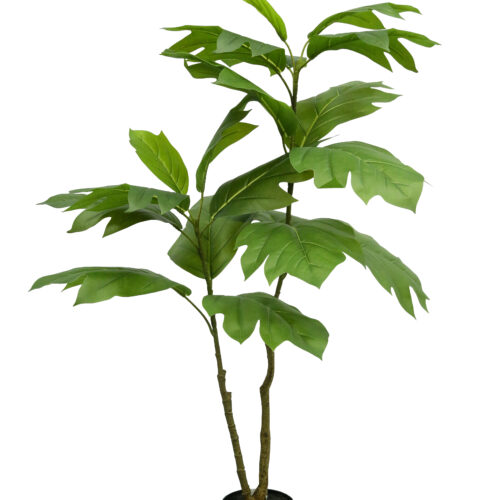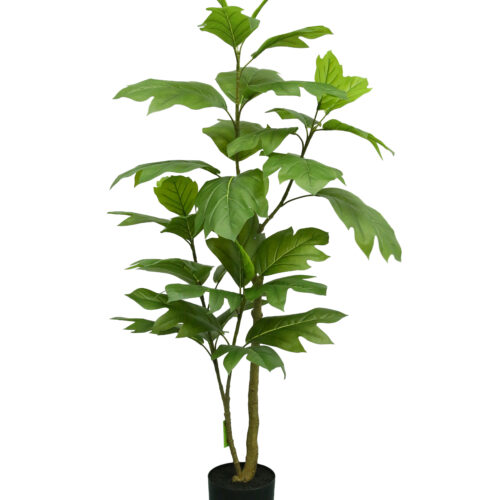
76 LEAVES KD
BREAD TREE

- Brief introduction
- The breadfruit tree (Artocarpus altilis) is a species of flowering tree in the mulberry family (Moraceae). It is native to the South Pacific region, including islands such as the Philippines, Indonesia, and various Polynesian islands.
- Appearance
- The breadfruit tree is a large, evergreen tree that can grow up to 20 – 30 meters (65 – 100 feet) tall. It has a thick trunk with a diameter that can reach up to 1 – 2 meters (3 – 6 feet). The bark is usually grey – brown and somewhat rough.
- The leaves are large, dark green, and deeply lobed, similar in appearance to the leaves of a fig tree. They can measure up to 30 – 90 centimeters (1 – 3 feet) in length and 20 – 60 centimeters (8 – 24 inches) in width.
- Fruit
- The most distinctive feature of the breadfruit tree is its fruit. The breadfruit is a large, round or oval – shaped fruit that can be as big as a human head, usually ranging from 10 – 30 centimeters (4 – 12 inches) in diameter.
- When ripe, the fruit’s skin is greenish – yellow to brown. The flesh of the fruit is starchy and has a texture somewhat similar to a potato or a freshly baked bread (which gives the tree its name). It can be eaten cooked and has a mild, nutty flavor.
- Cultural and Culinary Significance
- In many Pacific Island cultures, the breadfruit is a staple food. It has been a vital part of the diet for centuries. The fruit can be roasted, baked, boiled, or fried. For example, it can be cut into slices and roasted over an open fire until the flesh is tender and slightly charred on the outside, giving it a delicious smoky flavor.
- It also has cultural significance in these regions. It is often associated with feasts and celebrations and is an important symbol of sustenance and community. In addition to the fruit, other parts of the tree such as the leaves and the wood also have uses. The leaves can be used for wrapping food during cooking, and the wood is sometimes used for construction or making handicrafts.



